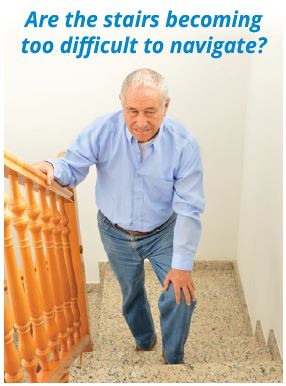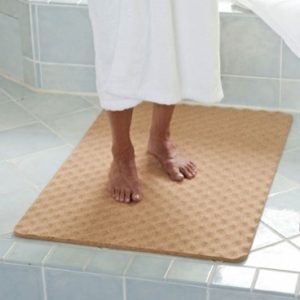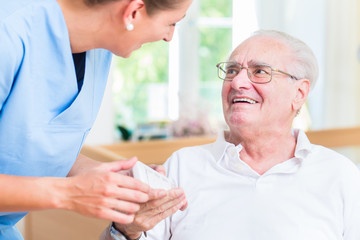Preventing Falls in the Home
Posted on by Dan Martin
 Falls in the home are dangerous for anyone, but they are especially dangerous for people who are injured or aging. Falls are also more likely to happen to people who are injured or aging, as people who are injured or aging might lack the agility to stop the fall. An aging person who falls is more likely to break a bone, and the healing process slows as people age.
Falls in the home are dangerous for anyone, but they are especially dangerous for people who are injured or aging. Falls are also more likely to happen to people who are injured or aging, as people who are injured or aging might lack the agility to stop the fall. An aging person who falls is more likely to break a bone, and the healing process slows as people age.
According to the Centers for Disease Control and Prevention, about one out of three older people falls each year. Each year, 2.5 million older people are treated in emergency rooms for fall injuries, and many of these people end up being hospitalized for injuries including fractures and head injuries. Falling can cause broken bones, head injuries, and can end up limiting a person’s activities due to a fear of injuries.
Preventing Falls Throughout Home
The best way to avoid falls is to make sure your home is free of trip hazards. Throughout the home, throw rugs should have a rubber backing to keep them from slipping or bunching. Wall-to-wall carpeting should be intact, not torn or fraying, and firmly attached to the floor. Kitchen and bathroom mats should be nonskid and non-bunching.
Items such as shoes or clothing or clutter should not be left on the floor. Care should be used when walking on slippery hardwood or tile floors, and these areas should never be wet or greasy. Stairs and landings should be kept free of any possible trip hazards: items left on the stairs, loose steps, fraying or loose carpeting, weak or missing handrails.
Reducing Fall Hazards in the Bathroom
 One room in the house in which falls are not only more likely but more dangerous is the bathroom. Tub or shower floors can be slippery. A tiled bathroom floor can get wet and slick. Bathmats can bunch up or skid on the smooth floor. A towel can fall off a hook and become a trip hazard.
One room in the house in which falls are not only more likely but more dangerous is the bathroom. Tub or shower floors can be slippery. A tiled bathroom floor can get wet and slick. Bathmats can bunch up or skid on the smooth floor. A towel can fall off a hook and become a trip hazard.
In addition, bathrooms are full of hard surfaces, including the sink, tub or shower surround, and toilet. A fall in a bathroom can cause not only minor injuries but also dental damage and concussions. While you can put a rubber traction mat in the shower or tub, make sure your rugs are nonskid, and keep your floors dry, you might need to take some extra steps to ensure safety.
What You Can Do to Prevent Falls in the Home
 To prevent falls, talk to your doctor about any medications that might affect your balance. If possible (and with your doctor’s approval), try a safe exercise that improves strength and balance. You should also think about getting your vision checked on a routine basis. These are all simple actions you can take in your daily life to stay safe at home.
To prevent falls, talk to your doctor about any medications that might affect your balance. If possible (and with your doctor’s approval), try a safe exercise that improves strength and balance. You should also think about getting your vision checked on a routine basis. These are all simple actions you can take in your daily life to stay safe at home.
In addition, consider reaching out to a CAPS-certified professional to come in and assess your home for fall hazards. A CAPS-certified occupational therapist, for example, can determine what in your home might be a non-obvious tripping hazard and find ways to avoid these. For example, a CAPS-certified contractor can install safety rails on stairs and in bathrooms and suggest other changes to prevent falls in the home and make your home safer.
For more tips on fall prevention, check out our post "5 Home Safety Tips for Seniors to Prevent Falls", which includes specific tips for certain areas throughout a home
Contact us to learn more about preventing falls at home or for a free consultation from one of our accessibility specialists.
